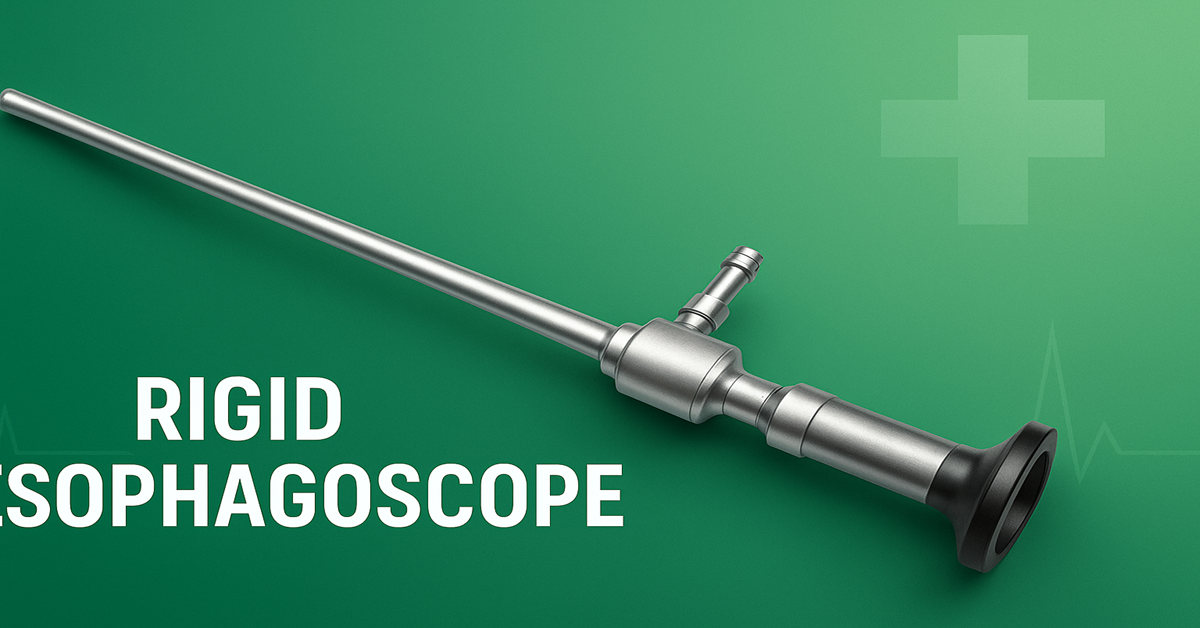Understanding the Rigid Cystoscope: Features, Uses, and Benefits
In the field of modern urology, the Rigid Cystoscope has become an indispensable diagnostic and therapeutic tool for examining the urinary bladder and urethra. This device plays a vital role in detecting, diagnosing, and even treating various urological conditions, ranging from urinary tract infections to bladder tumors. With technological advancements, rigid cystoscopes have evolved significantly, offering clearer visuals, improved functionality, and greater patient comfort during procedures.
What Is a Rigid Cystoscope?
A rigid cystoscope is a tube-like instrument made of metal, equipped with lenses and lighting systems, that allows urologists to visually inspect the interior of the bladder and urethra. Unlike its flexible counterpart, which bends to navigate through the urethra, the rigid cystoscope is straight and firm, offering better control and higher-resolution imagery. This makes it particularly useful in procedures where precision and clarity are essential, such as in the diagnosis of bladder tumors or in performing minor surgical procedures.
Rigid cystoscopes are commonly used in hospitals and clinics during procedures known as cystoscopies. These procedures are typically performed under local, regional, or general anesthesia, depending on the complexity of the case and the patient’s comfort. The device is inserted through the urethra and into the bladder, allowing real-time visualization of the bladder wall and the ability to perform interventions such as taking biopsies or removing foreign bodies.
Key Features and Design
The rigid cystoscope is designed to be durable and easy to sterilize, making it a reliable tool in repeated clinical use. Some of its core features include:
-
-
High-definition optics: The lens system in modern rigid cystoscopes provides excellent illumination and image clarity, which is crucial for detecting abnormalities.
-
Multiple channels: These channels allow for the insertion of surgical instruments, irrigation fluids, or biopsy tools during the procedure.
-
Sturdy construction: Made of stainless steel or other medical-grade metals, the rigid cystoscope is built to withstand rigorous use while maintaining sterility and performance.
-
Compatibility with video systems: Many newer models are compatible with video equipment, allowing real-time viewing on a screen, which is beneficial for both diagnostic and educational purposes.
-
This equipment comes in different sizes and configurations, tailored for specific patient groups (e.g., pediatric or adult) and types of procedures.
Clinical Applications
The Rigid Cystoscope is widely used in various clinical settings and serves multiple diagnostic and therapeutic purposes, including:
-
-
Diagnosis of bladder disorders: Urologists use the cystoscope to detect abnormalities in the bladder lining, such as inflammation, tumors, ulcers, or stones.
-
Hematuria evaluation: If a patient presents with blood in the urine (hematuria), a cystoscopy can help identify the source of the bleeding.
-
Removal of foreign bodies: Occasionally, foreign objects may become lodged in the bladder or urethra, and the cystoscope facilitates their safe removal.
-
Bladder biopsy: Tissue samples can be taken from suspicious areas for pathological examination.
-
Treatment of bladder tumors: In some cases, small tumors can be resected using specialized instruments passed through the cystoscope.
-
For men, cystoscopy with a rigid instrument may be less comfortable due to the length and curvature of the male urethra, but it remains a standard practice, particularly when high-resolution imagery is necessary.
Advantages of Rigid Over Flexible Cystoscopes
While both flexible and rigid cystoscopes have their place in urology, the rigid version offers distinct advantages in certain contexts:
-
-
Superior visualization: The optics in rigid cystoscopes generally provide better clarity and magnification.
-
Stability during procedures: The firm structure ensures greater control, especially during biopsy or surgical interventions.
-
Wider instrument channels: These allow for more complex tools to be used, enhancing therapeutic capabilities.
-
Despite the discomfort sometimes associated with rigid cystoscopy, especially in male patients, its precision and effectiveness often outweigh the drawbacks. Additionally, improvements in anesthesia and patient care have significantly reduced the discomfort involved in the procedure.
Technological Advancements
Recent innovations in the field have led to the development of video-integrated rigid cystoscopes. These devices incorporate miniature cameras and LED light sources directly into the scope, eliminating the need for separate optical cables and external light sources. This not only enhances image quality but also streamlines the workflow in the operating room.
Some rigid cystoscopes now come with digital imaging capabilities, allowing for recording and archiving of procedures. These advancements have proven invaluable in both patient management and medical education.
Additionally, certain systems are now integrated with artificial intelligence to aid in image interpretation, potentially identifying lesions or abnormalities that may be missed by the human eye.
Patient Preparation and Recovery
Before undergoing a rigid cystoscopy, patients are typically advised to empty their bladder. Depending on the reason for the procedure, anesthesia may be administered to reduce discomfort. The entire process usually takes 10 to 20 minutes, and patients can often return home the same day.
After the procedure, it’s normal to experience mild burning during urination or see a small amount of blood in the urine. These symptoms usually resolve within a day or two. However, patients are advised to stay hydrated and avoid strenuous activity for at least 24 hours. In rare cases, complications such as urinary tract infections or urethral injury may occur, and prompt medical attention should be sought.
Choosing the Right Equipment
For healthcare providers, selecting a high-quality Rigid Cystoscope is essential for delivering accurate diagnoses and safe procedures. When evaluating cystoscopy equipment, factors such as image quality, durability, ease of sterilization, and compatibility with other medical systems should be taken into account. Devices that offer modularity, allowing for the replacement or upgrading of individual components, are especially valued in busy medical settings.
Medical suppliers and manufacturers are continuously enhancing their product lines to meet the evolving needs of urologists. With rising demand for minimally invasive and precision-guided interventions, the rigid cystoscope remains a cornerstone of effective urological care.
Conclusion
In summary, the Rigid Cystoscope is a powerful tool in the arsenal of modern urology. Its robust design, superior imaging capabilities, and adaptability make it a preferred choice for various diagnostic and therapeutic procedures. As technology continues to advance, these instruments will likely become even more effective and patient-friendly. For urologists, surgeons, and healthcare facilities, investing in high-quality cystoscopy equipment is not only a matter of convenience but also of clinical excellence.







